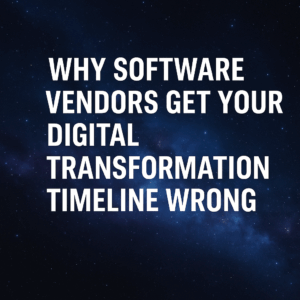Digital life cycle management (DLM) is the process of managing the digital content and data throughout its entire life cycle – from its creation or acquisition, to its storage, preservation, and eventual disposition.
DLM encompasses both the technical aspects of managing digital content or data, as well as the organizational and policy aspects. The technical aspects include developing and implementing systems and processes for the creation, capture, classification, storage, preservation, and disposition of digital content. The organizational and policy aspects include developing and implementing policies, procedures, and governance structures for managing digital content.
Digital life cycle management is a key component of effective information management. It ensures that digital content is managed in a way that meets the needs of the organization, while also protecting the content from loss or damage.
Table of Contents
ToggleDigital Life Cycle Management in Digital Transformation
DLM is an important part of any organization’s information management strategy. When developing a DLM strategy, organizations should consider the following:
- The types of digital content that need to be managed
- The organizational objectives for managing digital content
- The life cycle phases of digital content
- The technical systems and processes needed to support each phase of the life cycle
- The organizational policies and procedures needed to govern the management of digital content
Digital life cycle management is important in a digital transformation because it helps organizations effectively manage their digital content and data. With the increasing volume of digital content and data, it is essential to have a process in place to manage this information. Without DLM, organizations risk losing track of their digital content and data, which can lead to decreased productivity and decreased customer satisfaction.
An effective DLM strategy can help organizations improve their overall information management practices, which can lead to better decision making, increased efficiency, and improved customer service. Additionally, DLM can help organizations meet regulatory requirements and ensure compliance with industry standards.
DLM is often overlook in digital transformations. While the focus is on the new technology, process, and data, the management of the digital content and data is often overlooked. This can lead to problems down the road, such as loss of data, decreased productivity, and compliance issues.
Let’s discuss why Digital Life Cycle Management should be a main priority for your digital transformation or technology implementation project.

Master Data Management
Master data management (MDM) is a critical component of digital life cycle management. MDM helps organizations manage their master data, which is the core data that is used to support business operations. Master data includes customer data, product data, supplier data, employee data, financial data, and other types of operational data.
We all know that without an effective data management plan a digital transformation will fail. The goal of MDM is to provide a single, consistent view of an organization’s master data. This allows organizations to make better decisions, improve operational efficiency, and provide better customer service.
Organizations use MDM to ensure that their master data is accurate, complete, and up-to-date. MDM also helps organizations govern their master data, so that it is consistent across all applications and systems. Additionally, MDM can help organizations protect their master data from corruption or loss.
Digital life cycle management is a key factor to an overall effective master data management. From digital asset creation or acquisition, to its storage, preservation, and eventual disposition – it’s important to have visibility to this entire process through data management operations.
Compliance & Regulations
Organizations must comply with a variety of laws and regulations when managing their digital content and data. For example, the Sarbanes-Oxley Act (SOX) requires public companies to maintain accurate financial records. The Gramm-Leach-Bliley Act (GLBA) requires financial institutions to protect customer information. And the Health Insurance Portability and Accountability Act (HIPAA) requires covered entities to secure protected health information.
Organizations that fail to comply with these laws and regulations can face significant penalties, including fines, jail time, and irreplicable damage to their reputation. Digital life cycle management can help organizations accommodate these laws and regulations by ensuring that they have the systems and processes in place to manage their digital content and data.
The importance of digital life cycle management will continue to increase as the volume of digital content and data continues to grow. Organizations that do not have an effective DLM strategy will find it difficult to keep up with the pace of change and may eventually be left behind.
Data Security
The security of digital content and data is a critical concern for organizations. With the increased collection of data in a business environment or technology, as well as the number of ways that it can be accessed and shared, it is essential to have a robust security strategy in place.
DLM can help organizations protect their data from unauthorized access, use, or disclosure. Additionally, DLM can help organizations ensure that their data is properly backed up and disaster recovery procedures are in place. Planning for a data breach is going to help mitigate the risks that surround any cybersecurity attacks.
Secure customer or operational data is understanding its circulation and the importance of each stage to your organization. Organizations must take a proactive approach to data security and establish policies and procedures for managing digital content and data throughout its life cycle.
Digital Life Cycle Management in the Cloud
The cloud has become an increasingly popular option for storing and managing digital content and data. The cloud offers many benefits, including scalability, flexibility, and cost-effectiveness. Additionally, the cloud can help organizations improve their disaster recovery capabilities.
However, the cloud also presents some challenges for digital life cycle management. For example, it can be difficult to track and manage data that is stored in the cloud. Additionally, security concerns can make it difficult for organizations to move their data to the cloud.
Organizations that are considering using the cloud for digital life cycle management should carefully consider these challenges and develop a strategy for addressing them. Additionally, organizations should consider working with a trusted partner that has experience in managing data in the cloud.

To Conclude
Digital life cycle management is a critical process for organizations that want to effectively manage their digital content and data. DLM can help organizations comply with laws and regulations, improve their data security, and better manage their data in the cloud. However, DLM also presents some challenges, which organizations should carefully consider before implementing a DLM strategy.
To ensure a digital transformation is successful, understanding and implementing digital lifecycle management will be critical to protecting and optimize you organization’s data. Data is the lifeblood of any business, but only if it’s properly managed.
For more digital transformation best practices and case studies, I encourage your to download our newly released 2023 Digital Transformation Report. This digital asset is packed full of data and process management insights.





